Recently, the space industry has demonstrated many amazing achievements. However, in the shadow of these successes a whole series of threats lurks that, under some scenarios, are quite capable of pushing humanity back, or even completely denying it access to space for many years. This article tells about the five main challenges that impede development of the space sector.
Space debris
Today, there are more than 20,000 large man-made objects orbiting around the Earth. Only five thousand of them are currently operating devices. The rest are space debris — malfunctioning satellites, spent stages and boosters, debris from the vehicles which were exploded or crashed due to anti-satellite weapons tests, and even instruments lost by astronauts.
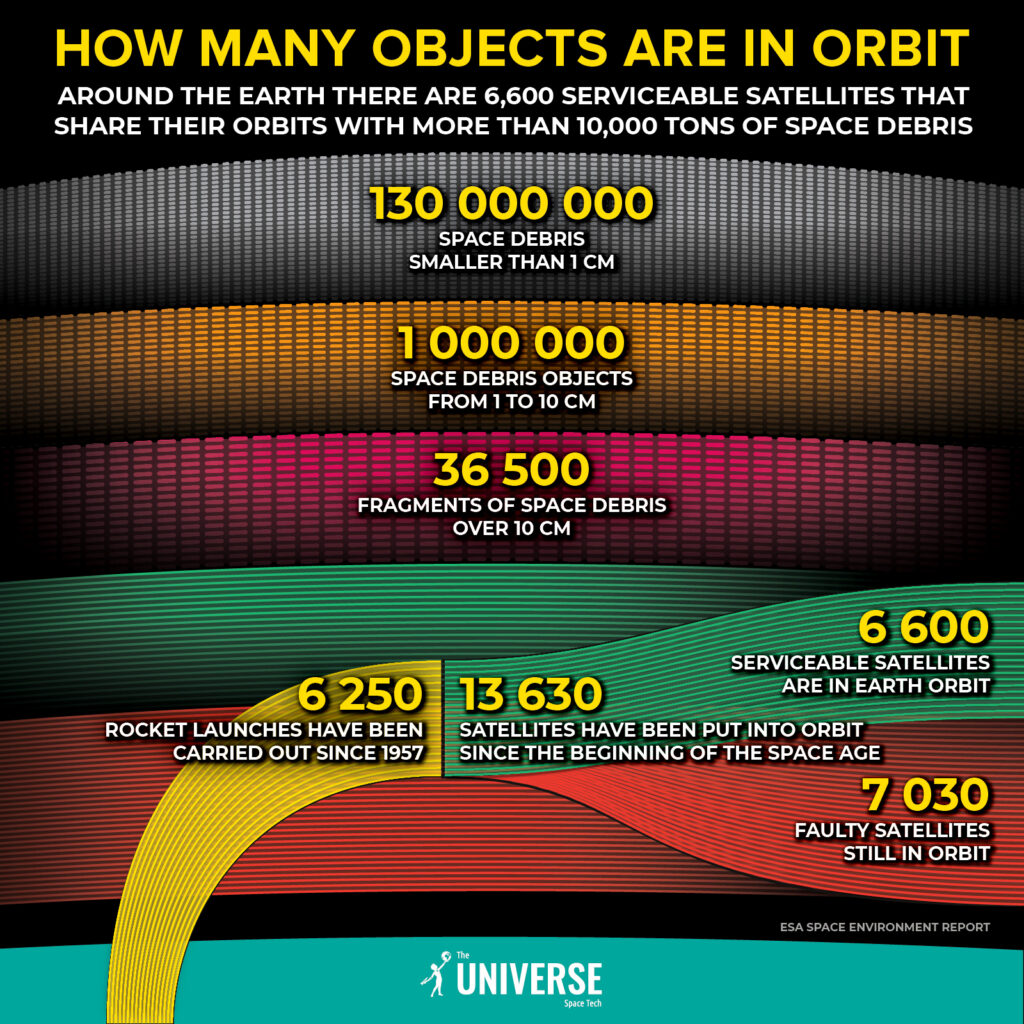
But the objects of space debris that we can observe are only the tip of the iceberg. According to some estimates, there are already up to a million fragments with a diameter of 1 to 10 cm and more than a hundred million fragments with a diameter of less than 1 cm in the Earth’s orbit. They pose a significant threat to any technology. Given the enormous velocities, even a small piece of debris can cause irreparable damage to a satellite or spacecraft.
It is not surprising that the fight against space debris is gradually becoming a priority, both for space agencies and for private companies. For this, it is proposed to use both measures aimed at preventing the appearance of new debris, and methods that will allow the most dangerous fragments to be removed from orbit.
Solar activity
Our Sun is now entering a new cycle of activity, accompanied by an increase in the number of flares. Most of them do not pose a direct danger to near-Earth satellites, which are reliably covered by the magnetic field of our planet. However, the Sun can affect them in a different way. The fact is that the increase in solar activity leads to “inflating” the Earth’s atmosphere, which accelerates the descent of spacecraft from orbit. In February 2022, we got visual confirmation of this when a solar storm killed a batch of just-launched Starlink satellites.
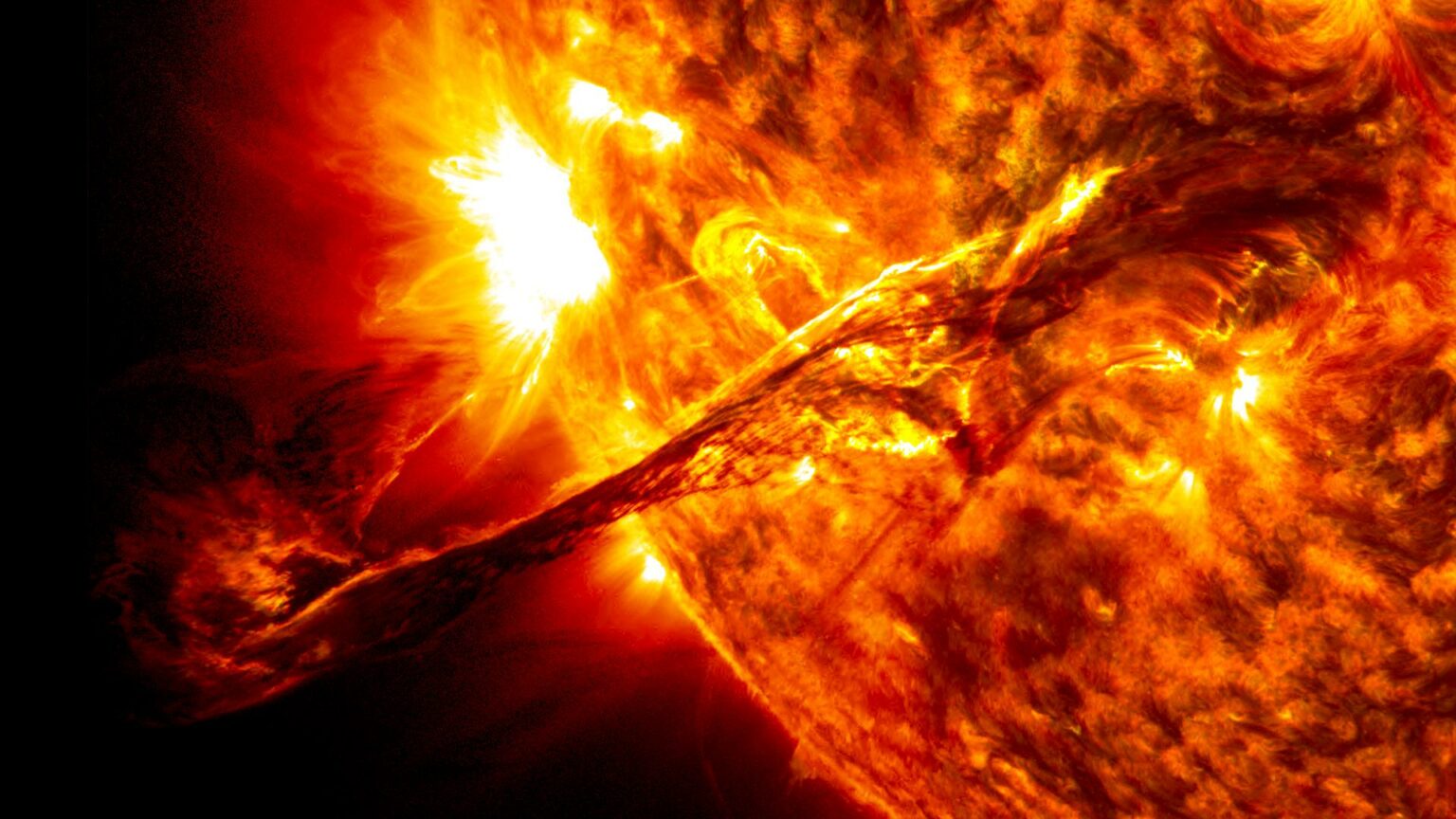
The activity of our star can also pose threats to interplanetary missions that do not have the luxury of the protective umbrella of the Earth’s magnetosphere. People are under a particularly great threat. That is why all projects of lunar settlements and Martian expeditions include the creation of special anti-radiation storage facilities.
Also, we should not forget about super flares that occur once in several centuries, such as the Carrington event of 1859. If the Earth is in the path of such an emission, it can disable most of the satellites in near-Earth space. All this means that for the sustainable development of the space infrastructure, humanity should spend more effort on studying the Sun. Increasing the accuracy of space weather forecasts will minimize damage from its activity.
Anti-satellite weapons
A significant portion of the space debris population is the result of testing anti-satellite weapons. The last such test was conducted by Russia in November 2021. This irresponsibly conducted operation generated a lot of debris that poses a threat to the ISS and other space vehicles.
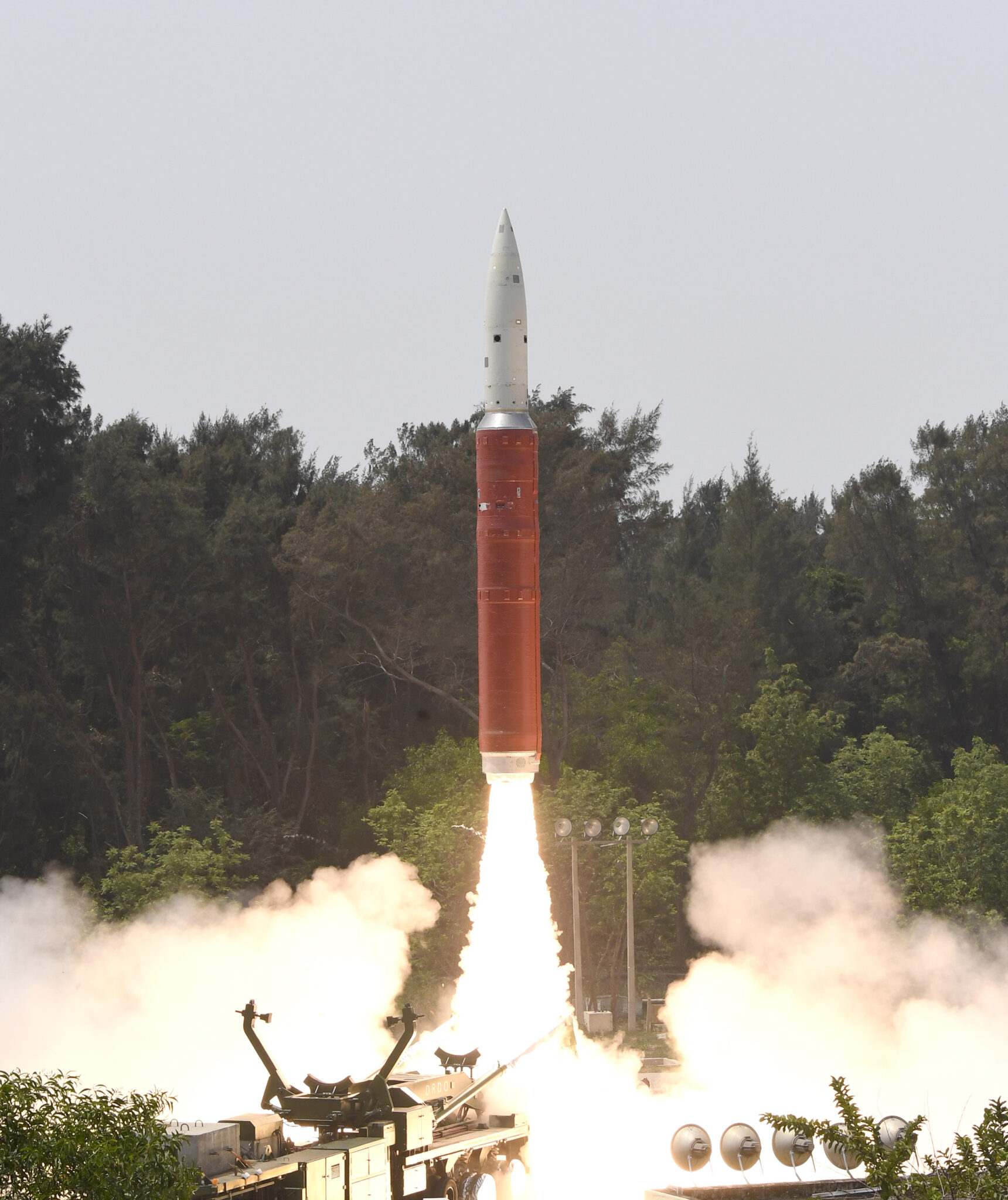
The Russian test also revived fears of Kessler syndrome, a scenario in which the resulting debris collides with other satellites, leading to a self-sustaining destruction reaction. Its result may be that humanity will lose the opportunity to launch anything into space for a long time.
One of the consequences of last year’s events was the American proposal to introduce a moratorium on testing anti-satellite weapons. As for now, in addition to the USA, Canada, Germany and Japan joined it. However, despite all the laudability of this initiative, it is extremely difficult to imagine that it will be approved by such countries as China, Iran, or Russia itself under the current government. And this means that they will continue to develop anti-satellite weapons. And sooner or later, we will read the news about another test or, God forbid, the actual use of such means. It is hardly worth explaining the gravity of consequences of such a scenario for further space exploration.
Space confrontation
Anti-satellite weapons are only part of a larger problem that can be described as a new space confrontation. As a rule, it is reduced to the USA and China, but this is not entirely correct. As access to space becomes easier, more and more countries are starting to implement their space projects, some of which are directly aimed against other countries.
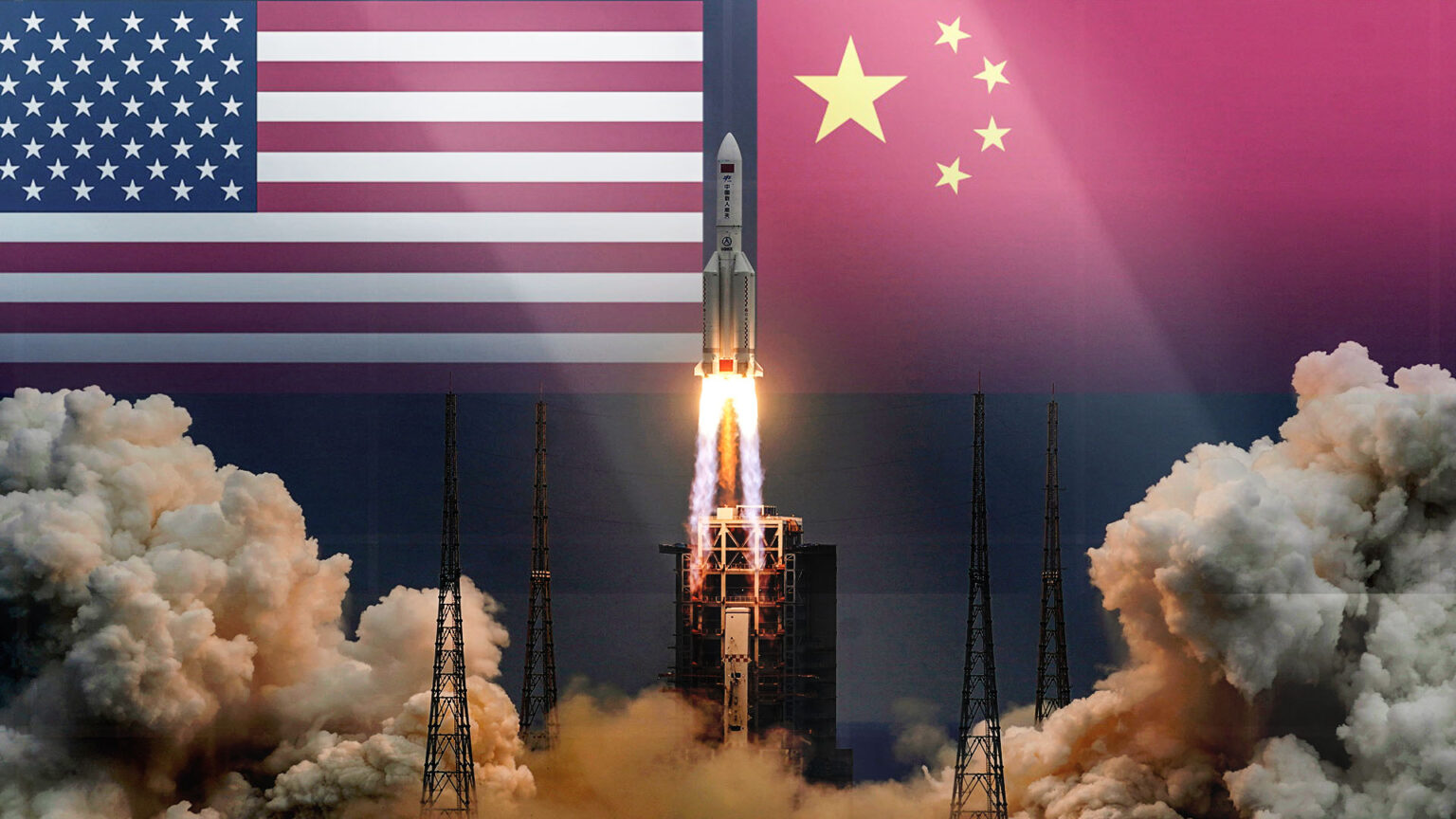
Space confrontation does not necessarily manifest itself in a direct arms race. Everything is being used: the loud accusations of the parties for clogging the outer space and conducting dangerous experiments, lawsuits, propaganda, disputes over the right to use certain orbits and frequencies. And when the US and China start implementing their lunar plans, it is possible that we will witness a competition to “stake out” the best areas on the south pole of the Moon.
Further escalation of these processes is bound to harm the space industry. Taking in account the possibility that the space cold war can turn into a hot one companies will have to reassess the risks, which may negatively affect the implementation of various initiatives.
Outdated legislation
In 1967, the United States, Great Britain and the USSR signed the Outer Space Treaty. This document played an important role in establishing the basic principles of international space law. Unfortunately, this treaty remained the only one of his kind. For example, the 1979 Moon Treaty was never signed by any of the leading space powers.

Meanwhile, since that time the situation in space has undergone a number of radical changes. The most obvious of them was the emergence of a multitude of private companies that have the same capabilities as state space agencies (and sometimes even more). The 1967 Outer Space Treaty does not mention the issue at all, which is not surprising — 55 years ago, private space companies existed only in science fiction. The issues of mineral extraction and territorial affiliation of settlements on other celestial bodies are also completely unsettled.
In recent years, some attempts have been made to settle these issues. Thus, the USA legally allowed its companies to mine minerals in space. Another American initiative was the Artemis Accords, which establishes the principles of cooperation and civil activity in the exploration and use of the Moon, Mars and other celestial bodies. At for now, they have been approved by more than two dozen countries, including almost all leading Western nations.
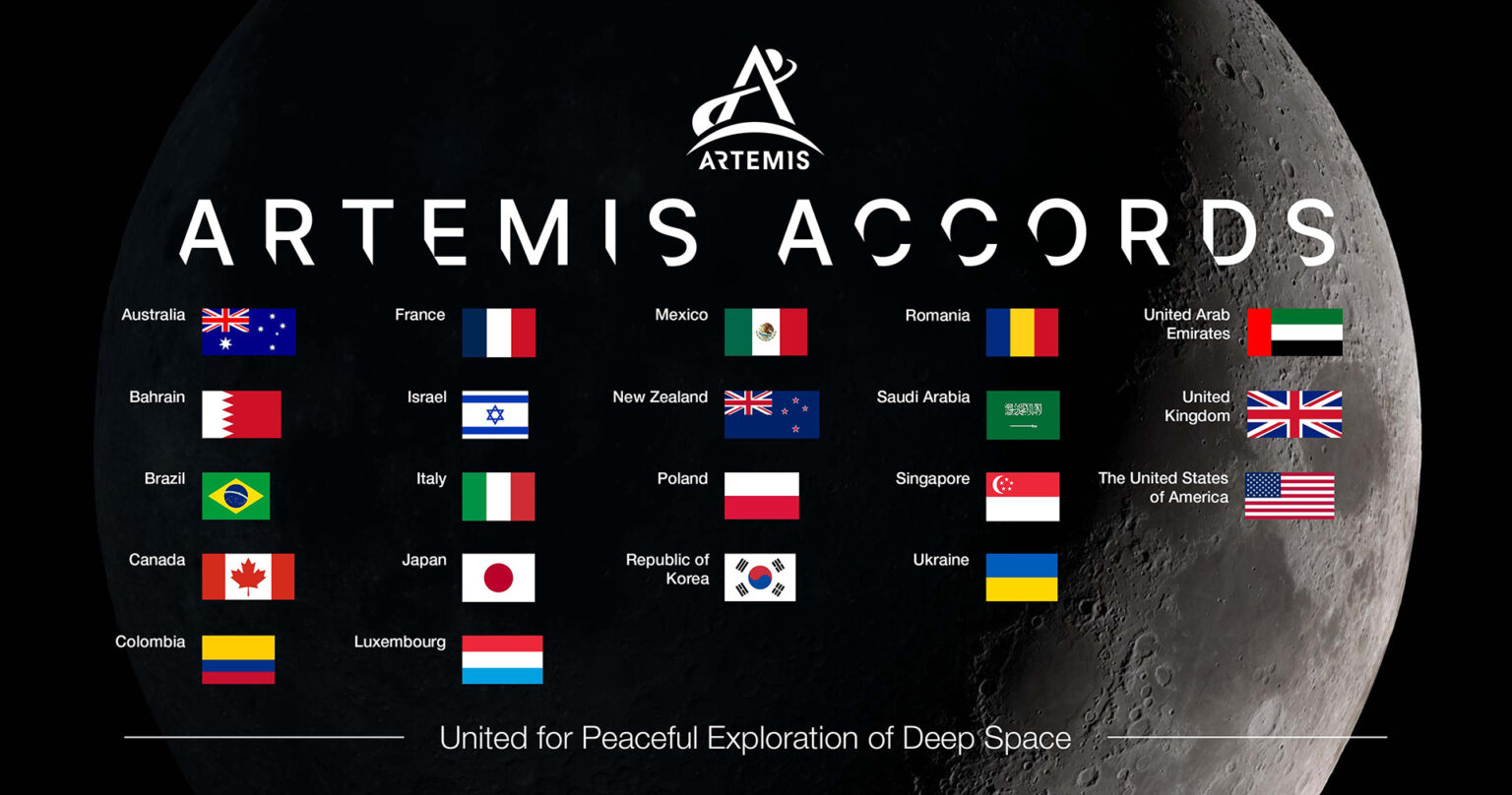
But again, it is extremely unlikely that China or even India will want to join the initiative (not to mention Russia). And the lack of uniform “rules of the game” significantly increases the risks of future clashes when distributing plots on the same Moon or extracting minerals.

